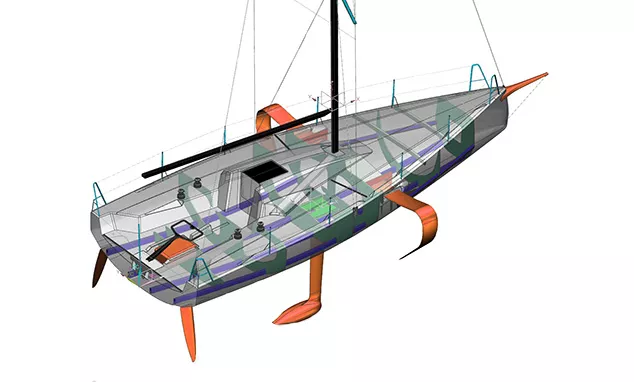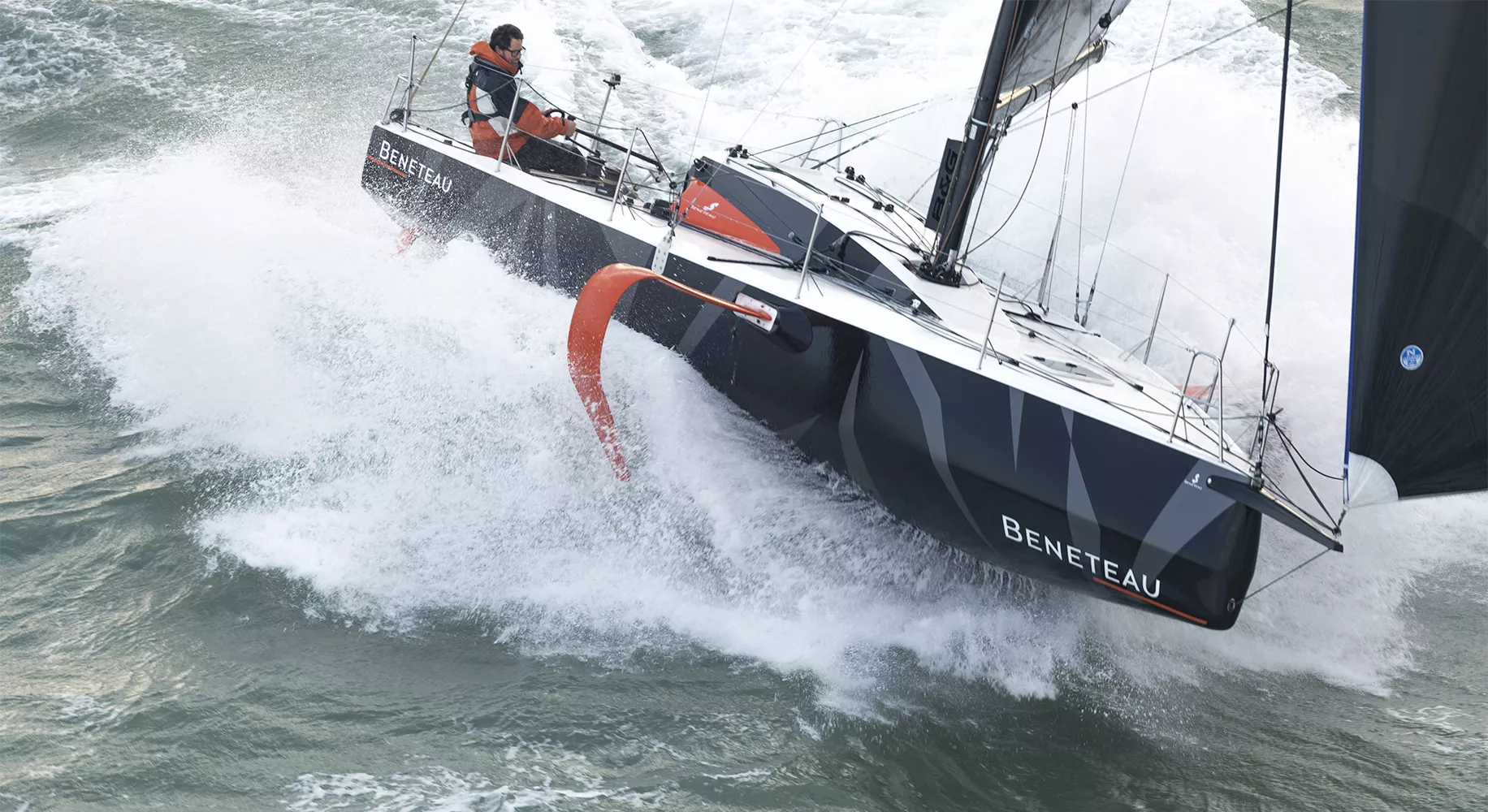Production built for the first time to fit out the new Figaro BENETEAU 3, foils improve the performance of the Solitaire Urgo Le Figaro one design, by increasing its power and stability at more points of sail, while reducing the effect of drag.

The foils of the FIGARO BENETEAU 3
At some speeds foils reduce the boat’s weight under sail by nearly 30% in relation to a Figaro BENETEAU 2.
40 YEARS OF PROGRESS
The first attempts at fitting out offshore racing boats with foils dates back to the 1970s, with Paul Ricard, Eric Tabarly’s trimaran. At the time, the concept was developed on the Formule 40, equipped with straight foils angled at 45 degrees. Then they were adapted with a curved version on ocean-going trimarans.
There was a major development in 1994, when the Hydroptère was launched. It sailed airborne on three foils at 45 degrees and had a T-rudder. Its success was confirmed in the America’s Cup in 2010, when USA 17 was equipped with J-shaped foils. Then in 2013, the AC72 raced on L-shaped foils at over 40 knots. Shortly afterwards, the Imoca monohulls of the Vendée Globe and then the Ultimes maxi-trimarans and the Multi50s converted to foils.
THE FIRST PRODUCTION FOIL ON A RACING BOAT
BENETEAU has broken new ground by being the first boatyard to install foils on a production offshore racing boat. To build the Figaro BENETEAU 3, they set up a dedicated production site at Cheviré, near Nantes.
“This project is a real industrial challenge, because foils were a complete unknown to us”, said Marc Vaillier, in charge of the programme at BENETEAU

“CHISTERA” GLOVE GEOMETRY
The Figaro BENETEAU 3 foils were produced by Multiplast, each weighing 38 kilos for a full length of 3.3 metres. Their “chistera” glove shape prevents leeway when close-hauled, assisting the keel fin, of limited width. Their geometry also reduces the drag of the hull and the appendages.

“TURBO EFFECT”: FASTER AND GREATER STABILITY
In more points of sail, such as reaching and downwind, the Figaro BENETEAU 3’s foils create vertical lift, which takes the strain off the boat and increasing righting moment.
"Instead of making her heavier with ballast windward, we decided to make her lighter downwind by opting for foils”, said Vincent Lauriot-Prévost, who runs the VPLP design office that designed the Figaro BENETEAU 3.
The result is higher speed averages and a more stable boat that is roughly 30% lighter than
the Figaro BENETEAU 2. With her “turbo effect”, racers can push her harder, particularly in a breeze.